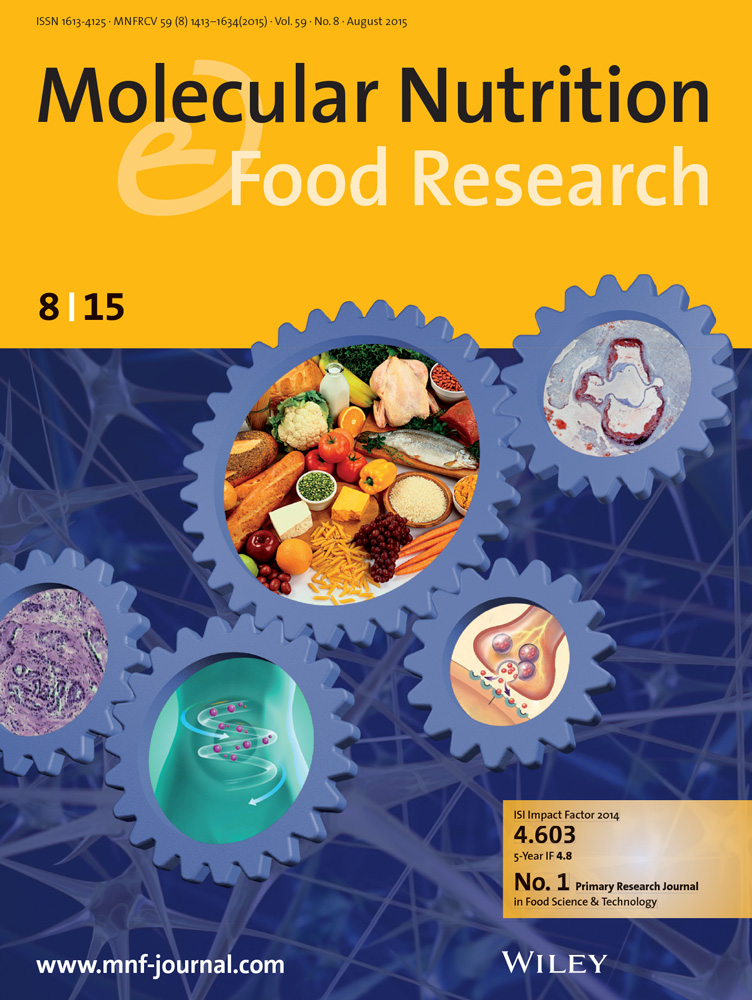Preferential Therapeutic Potential of Ficus carica Against Monosodium Glutamate and Metanil Yellow-Evoked Hepato-Renal Injury: In Vivo and In Silico Approaches.
IF 4.5
2区 农林科学
Q1 FOOD SCIENCE & TECHNOLOGY
引用次数: 0
Abstract
Food preservatives can break food safety worldwide; herein, we studied the mitigating effect of Ficus carica (FC) on hepato-renal injury resulting from monosodium glutamate (MSG) or metanil yellow (MY) as a common food preservative. Rats were assigned into five groups; Control, MSG (400 mg/kg), MY (200 mg/kg), FC+MSG (received FC plus MSG), and FC+MY group (received FC plus MY). The antioxidant properties of FC were evaluated. The results revealed the antioxidant potency of FC leave extract. MSG/MY evoked a hepato-renal injury indicated by marked elevations in their biochemical functions. Besides, oxidative damage was also initiated represented by significant increases in MDA levels and decreases in GSH content and SOD activity accompanied by apoptotic cascade (increases in Bax/Bcl2 ratio and caspase3 expression). The molecular docking ascertained the interaction between MSG/MY and cellular antioxidants. However, FC was able to reduce the MSG/MY-induced oxidative stress, apoptosis, and histopathological alterations as well as improve the liver and kidney functions. In the molecular docking model, the natural bioactive compounds of FC explored high affinities for binding with Bax and caspase-3 abrogating the induced apoptosis. The antioxidant potential of FC mitigated the hepato-renal damage in rats caused by MSG or MY.无花果对味精和甲氧胺黄诱发的肝肾损伤的优先治疗潜力:体内和计算机方法。
食品防腐剂可以破坏世界范围内的食品安全;在此,我们研究了Ficus carica (FC)对味精(MSG)或甲氧基黄(MY)作为一种常见的食品防腐剂引起的肝肾损伤的缓解作用。将大鼠分为五组;对照组,味精(400 mg/kg), MY (200 mg/kg), FC+MSG(接收FC+MSG)和FC+MY组(接收FC+MY)。对FC的抗氧化性能进行了评价。结果表明,FC叶提取物具有较强的抗氧化能力。MSG/MY可引起肝肾损伤,其生化功能显著升高。此外,还引发了氧化损伤,表现为MDA水平显著升高,GSH含量和SOD活性降低,并伴有凋亡级联反应(Bax/Bcl2比值和caspase3表达升高)。分子对接确定了MSG/MY与细胞抗氧化剂的相互作用。然而,FC能够减少MSG/ my诱导的氧化应激、细胞凋亡和组织病理学改变,并改善肝肾功能。在分子对接模型中,FC的天然生物活性化合物与Bax和caspase-3具有较高的亲和力,从而消除了诱导的细胞凋亡。FC的抗氧化作用可减轻味精或MY引起的大鼠肝肾损伤。
本文章由计算机程序翻译,如有差异,请以英文原文为准。
求助全文
约1分钟内获得全文
求助全文
来源期刊

Molecular Nutrition & Food Research
工程技术-食品科技
CiteScore
8.70
自引率
1.90%
发文量
250
审稿时长
1.7 months
期刊介绍:
Molecular Nutrition & Food Research is a primary research journal devoted to health, safety and all aspects of molecular nutrition such as nutritional biochemistry, nutrigenomics and metabolomics aiming to link the information arising from related disciplines:
Bioactivity: Nutritional and medical effects of food constituents including bioavailability and kinetics.
Immunology: Understanding the interactions of food and the immune system.
Microbiology: Food spoilage, food pathogens, chemical and physical approaches of fermented foods and novel microbial processes.
Chemistry: Isolation and analysis of bioactive food ingredients while considering environmental aspects.
 求助内容:
求助内容: 应助结果提醒方式:
应助结果提醒方式:


